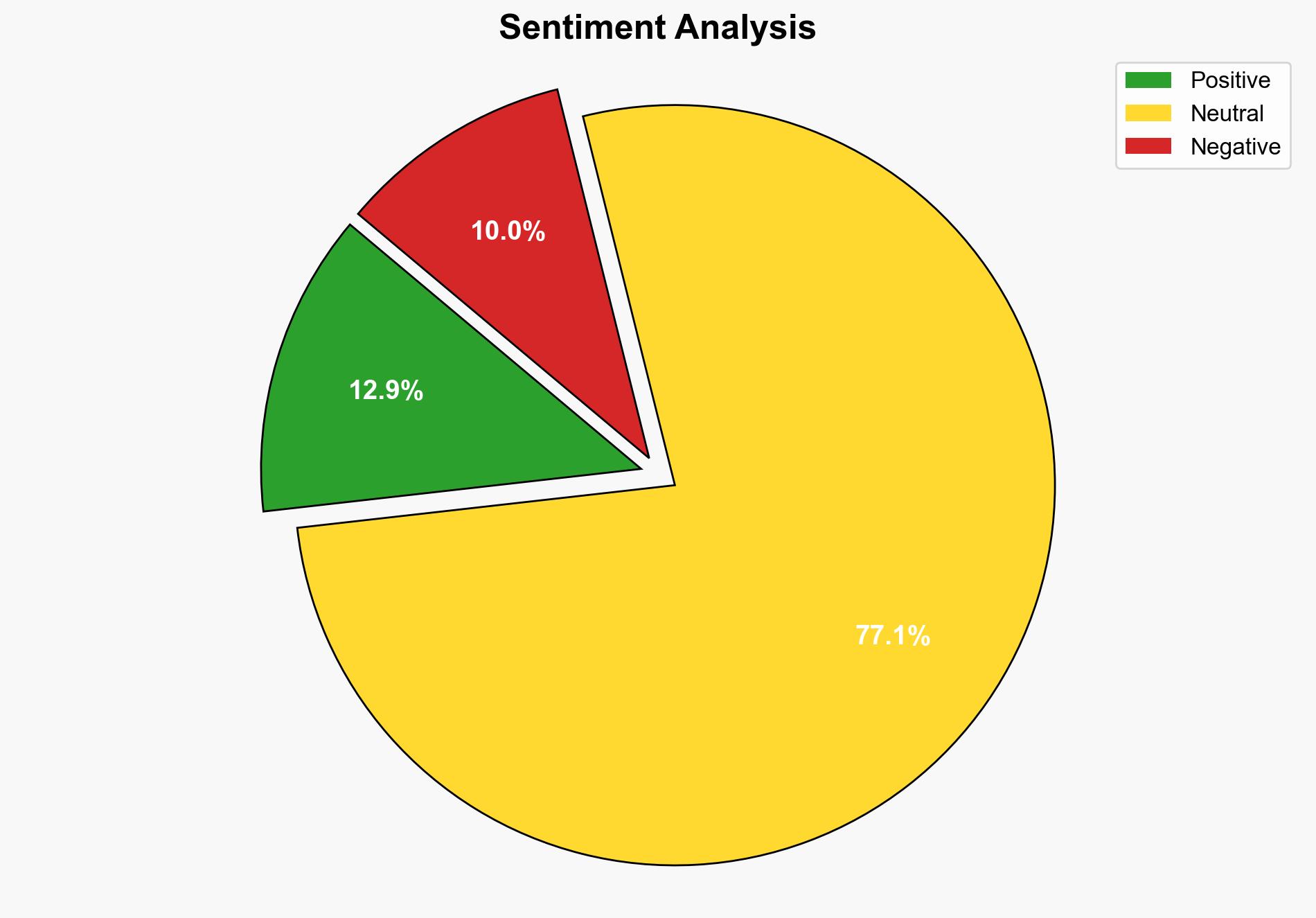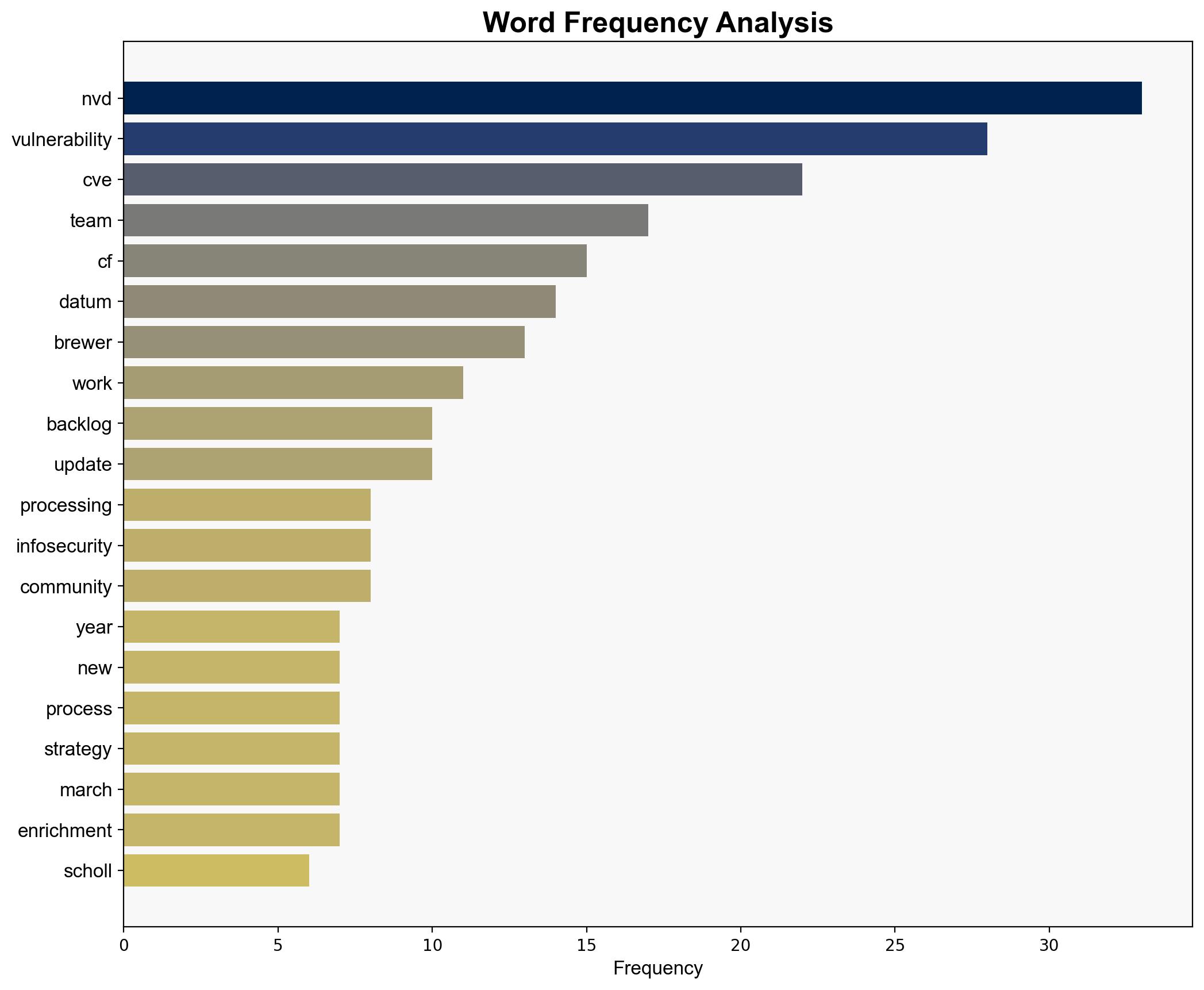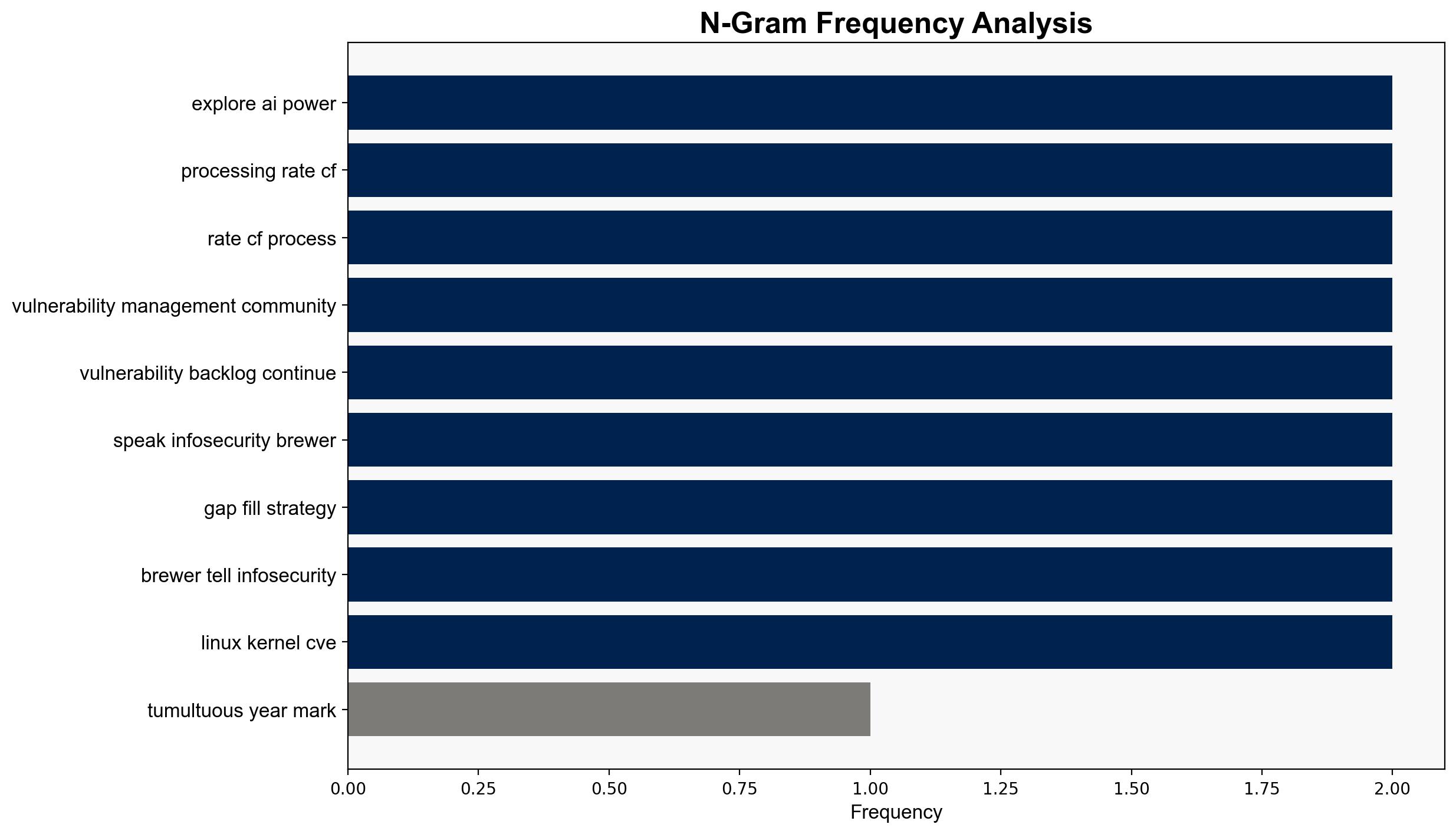NVD Revamps Operations as Vulnerability Reporting Surges – Infosecurity Magazine
Published on: 2025-04-11
Intelligence Report: NVD Revamps Operations as Vulnerability Reporting Surges – Infosecurity Magazine
1. BLUF (Bottom Line Up Front)
The National Vulnerability Database (NVD) has stabilized after a challenging year and is now addressing a surge in vulnerability reporting. Key improvements include enhanced processing capabilities and the integration of automation and AI methods. Despite past staffing issues, the NVD is now operating at full capacity, processing vulnerabilities at rates comparable to pre-2024 levels. Strategic focus on maintaining operational efficiency is crucial to manage the increased workload effectively.
2. Detailed Analysis
The following structured analytic techniques have been applied for this analysis:
General Analysis
The NVD faced significant internal challenges in early 2024 due to the expiration of a critical contract, leading to a temporary drop in vulnerability processing. However, with the extension of a commercial contract and onboarding of a new team, the NVD has regained its processing momentum. The implementation of automation and AI technologies is expected to further enhance efficiency and reduce backlog. The strategic updates shared by Tanya Brewer and Matthew Scholl at VulnCon highlight a proactive approach to overcoming past hurdles and adapting to increased demands.
3. Implications and Strategic Risks
The surge in vulnerability reporting poses a risk to the NVD’s ability to maintain timely and accurate vulnerability management. Delays in processing could impact national security and economic interests by increasing the exposure to unaddressed vulnerabilities. The reliance on external contracts for staffing solutions may present future risks if not managed sustainably. Additionally, the integration of new technologies, while beneficial, requires careful oversight to ensure data integrity and security.
4. Recommendations and Outlook
Recommendations:
- Enhance internal training programs to ensure the new team is fully equipped to handle increased workloads.
- Invest in long-term staffing solutions to reduce dependency on external contracts.
- Implement robust oversight mechanisms for AI and automation tools to maintain data integrity and security.
- Foster inter-agency collaboration to share best practices and resources for vulnerability management.
Outlook:
Best-case scenario: The NVD successfully integrates new technologies, maintains a high processing rate, and effectively manages the vulnerability backlog, enhancing national cybersecurity posture.
Worst-case scenario: Continued surge in vulnerability reports overwhelms the NVD, leading to significant delays and increased security risks.
Most likely scenario: The NVD stabilizes its operations, gradually reduces backlog, and maintains a steady processing rate with ongoing improvements in efficiency.
5. Key Individuals and Entities
The report mentions the following significant individuals and organizations:
- Tanya Brewer
- Matthew Scholl
- National Vulnerability Database (NVD)
- US National Institute of Standards and Technology (NIST)



